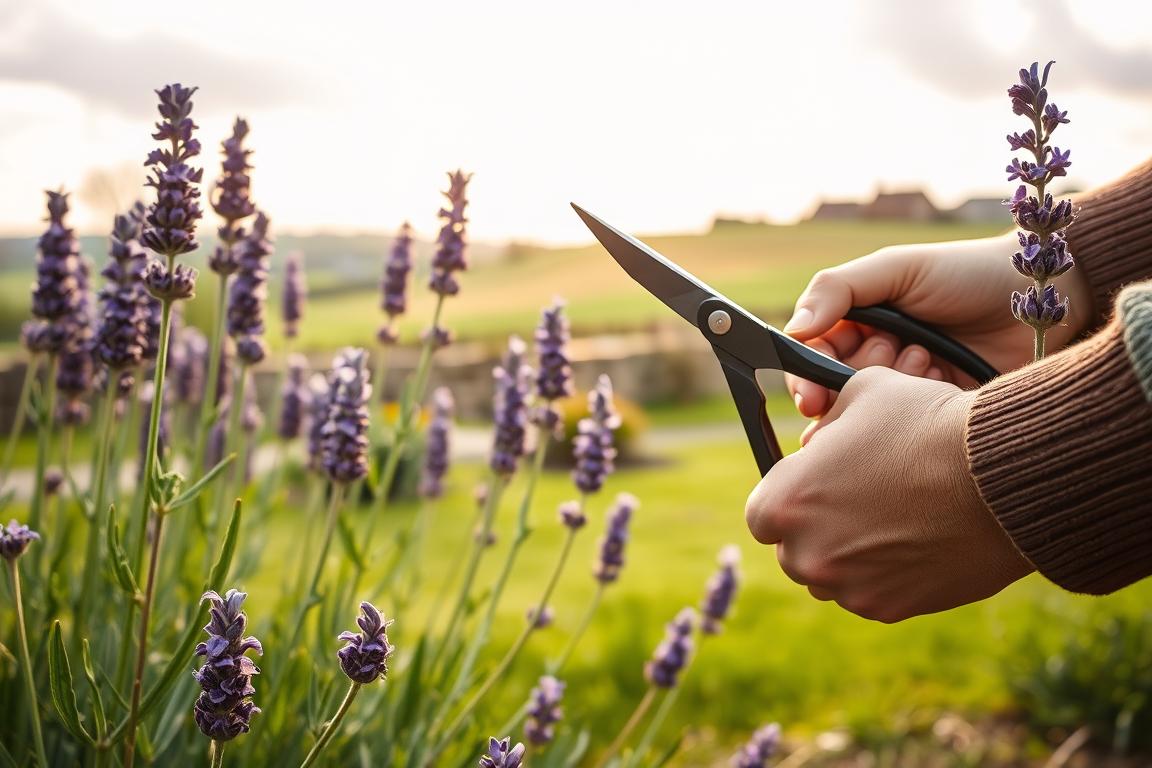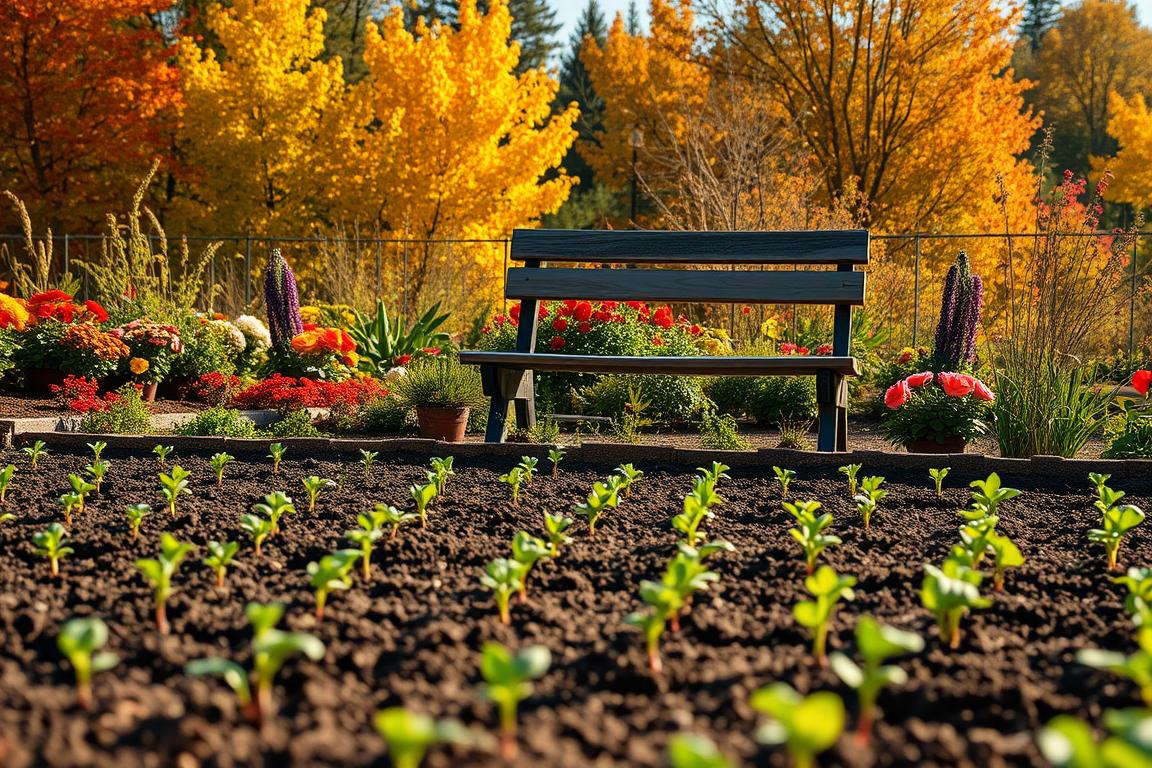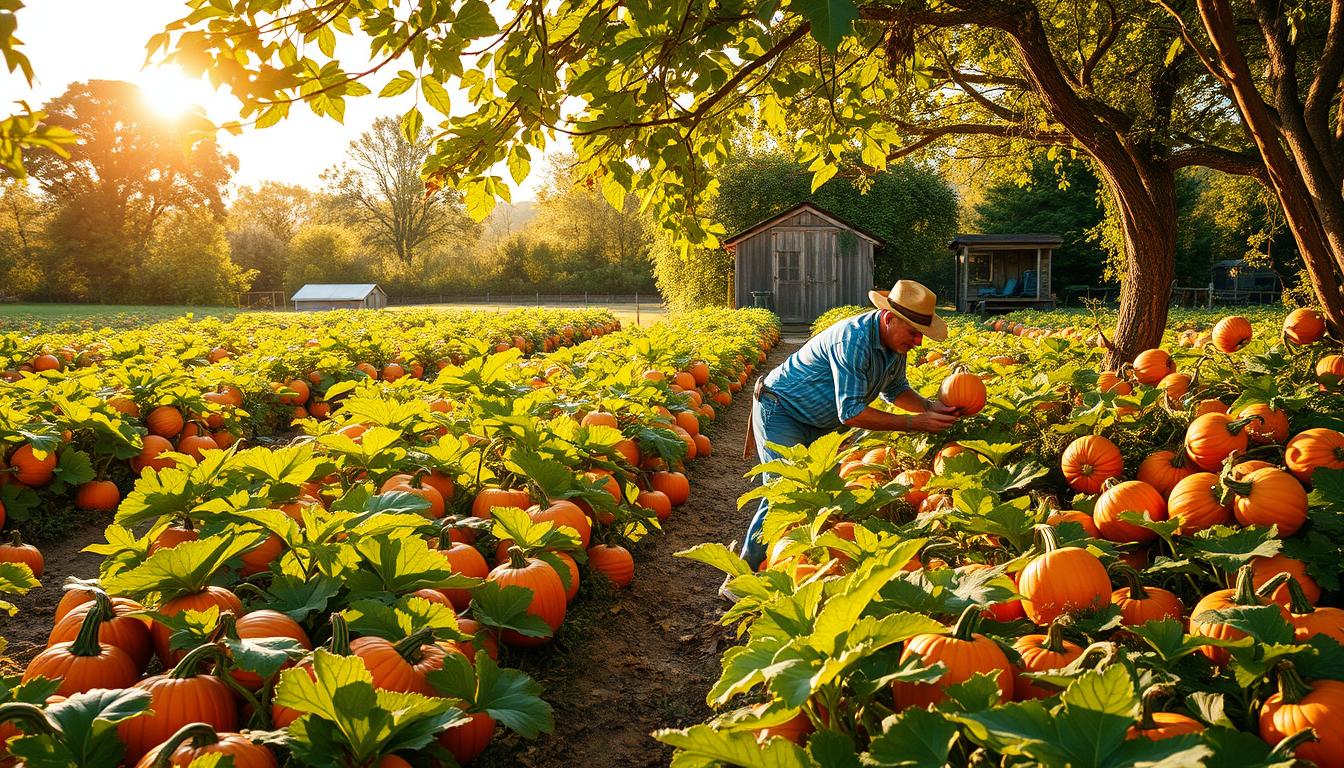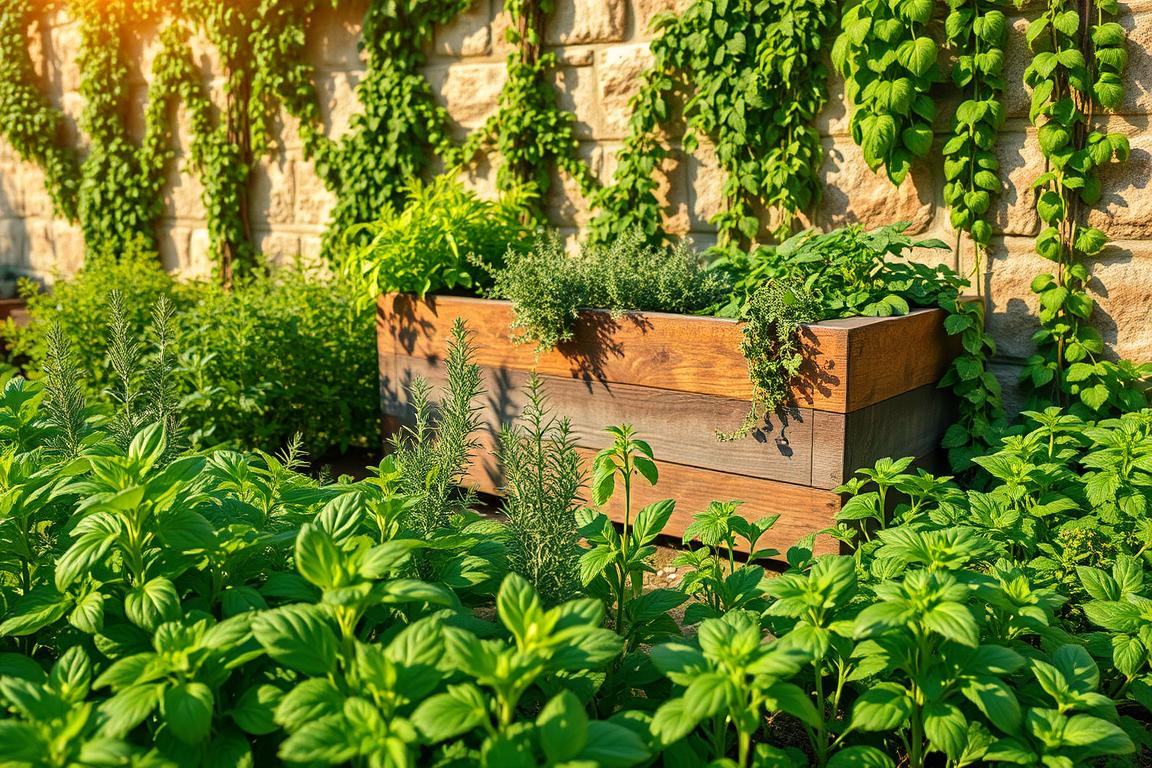Pruning lavender in the spring is crucial for healthy plants and beautiful blooms. Many gardeners worry about pruning, fearing it might harm the plant. But, with the right spring maintenance, your lavender will thrive and stay lush.
This guide will teach you how to prune lavender effectively. We’ll cover when to prune, the best techniques, and how to care for your plants afterward. Follow these tips for a vibrant and lush garden.
Key Takeaways
- Prune lavender twice yearly—in spring and summer—to boost growth and flowering.
- Spring pruning should start in late March or early April, before buds appear.
- Cut 1/3 to 2/3 of the plant in spring to encourage dense foliage and blossoms.
- Avoid cutting into the woody base to prevent disease and damage.
- Sanitize tools with a 1:9 bleach-water mix to stop disease spread.
- Proper pruning reduces fungal issues and improves plant shape.
Why Spring Pruning Is Essential for Healthy Lavender Plants
Spring is the best time to shape your lavender. It helps plants grow well all year. This care leads to strong blooms and fights off diseases. Let’s see why it’s so important.
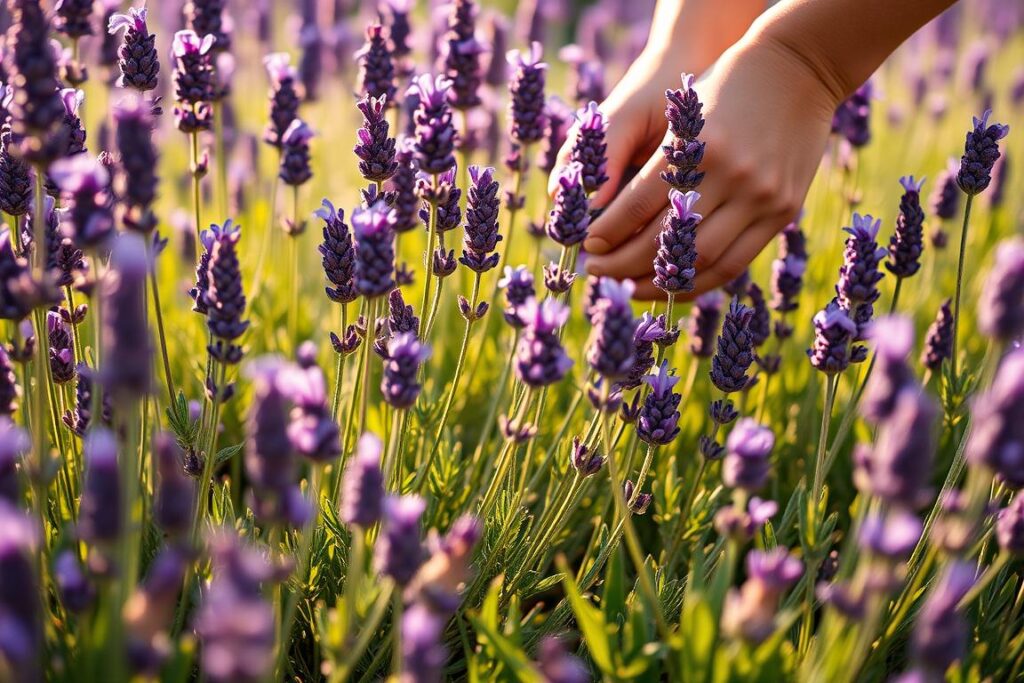
The Benefits of Regular Lavender Maintenance
Pruning is more than just making your plants look good. It keeps them alive. Here’s how:
- Encourages airflow, reducing mildew risks.
- Stimulates new growth, delaying woody stem buildup.
- Promotes compact shapes, preventing leggy, unmanageable plants.
Pruning every year keeps your plants healthy. For example, cutting back overgrown lavender by a third in spring can make it look neat and tidy. This improves both its health and looks.
What Happens When You Skip Your Spring Lavender Pruning
Not pruning can cause big problems. Without it:
- Woody stems weaken stems, making plants brittle.
- Leggy branches flop under flower weight, risking breakage.
- Old growth traps moisture, inviting fungal diseases.
“Lavender left unpruned risks dying back entirely after harsh winters,” says the American Lavender Society. Regular care prevents this.
How Proper Pruning Affects Blooming Cycles
Timing is everything for blooms. Pruning in spring has two main effects:
Early cuts help new shoots grow, leading to more flowers. Trimming faded blooms in spring can lead to a second wave of flowers. But, only cut green stems for the best results.
Young plants need light trims to grow strong roots. Older plants need more drastic cuts to keep blooming. This balance ensures your lavender blooms well and lives longer.
The Best Time for Pruning Lavender in the Spring
Knowing when to prune lavender in spring keeps your plants healthy and bright. The timing depends on the weather, how ready the plants are, and your location. Let’s explore the important factors to get it right.
Weather Conditions to Watch For
For successful spring pruning of lavender, wait for the right weather. Make sure:
- Frost warnings have passed in your area.
- Soil is thawed and daytime temps stay above 50°F (10°C).
- New green shoots appear at the plant’s base.
Pruning too early can harm your plants from frost. Wait until the soil warms up to avoid shocking the roots.
Signs Your Lavender is Ready for Trimming
Before you start springtime lavender trimming, look for these signs:
- Small green leaves sprouting near the woody stem base.
- No flower buds visible (wait until after flowering for fall pruning).
- Stems feel firm but not brittle.
“Pruning at this stage boosts flower production by up to 50%,” says the USDA Agricultural Handbook.
Regional Timing Differences Across the US
- Southern States (e.g., Texas, California): Early March
- Midwest: Late March to mid-April
- Northeast: Early April or later
Adjust dates based on local frost forecasts. For example, coastal areas may start earlier than inland zones with late frosts.
By matching your climate zone and plant signals, you’ll find the perfect time for spring pruning of lavender. Always put plant health first, not just calendar dates!
Essential Tools and Equipment for Lavender Pruning
Sharp, clean tools are key for lavender pruning techniques. Start with bypass pruners or sharp garden shears for precise cuts. Dull blades can damage stems, so get quality tools for fast healing cuts. For small plants, garden scissors are great, while hedging shears are best for dense hedges. Remember, gloves are important because lavender leaves can irritate skin.
- Bypass pruners: Ideal for thinning and shaping individual stems.
- Garden shears: Perfect for light trimming of young plants.
- Hedging shears: Use for mature hedges to maintain a neat shape.
- Sanitation kit: Rubbing alcohol or a 10% bleach solution keeps tools disease-free.
Sanitize tools between plants to prevent disease spread. Wipe blades before and after each plant—this simple step is part of the best practices for lavender pruning. For large jobs, lay down a tarp to collect clippings, which can later be used in crafts or dried for scent.
“A clean cut is a healthy cut. Never skip sanitizing—your plants will thank you.”
When handling Spanish or English varieties, always cut above new growth. Avoid old, woody stems to encourage fresh shoots. By following these steps, you’ll master how to prune lavender efficiently. Regular maintenance keeps tools sharp and ready for years of use, ensuring your lavender thrives season after season.
Step-by-Step Guide to Spring Lavender Pruning
Learning how to prune lavender plants leads to lush growth and vibrant blooms. This lavender pruning guide will help your garden thrive:
Preparing Your Plants for the Pruning Process
- Check for dead or diseased stems. Remove them first to stop the spread of problems.
- Wait for the soil to dry out. Prune in the morning for the best results.
Where to Make the First Cut
Make cuts just above green growth. Never cut into the woody base. Look for the area where new leaves start. This ensures your cuts are safe and effective.
How Much to Trim: Finding the Perfect Balance
Don’t remove more than one-third of the plant’s height. Young plants need light trimming to avoid stress. For mature plants, you can cut deeper but always leave 2-3 inches of green foliage.
Techniques for Different Varieties
Adjust your pruning method based on the plant type:
- English Lavender: Trim 2-3 inches above woody stems after blooming. Use a rounded shape to improve airflow.
- French Lavender: Lightly shear after each bloom cycle to encourage more flowers.
- Spanish Lavender: Trim the top third carefully to keep its unique flower spikes.
Always use clean shears to avoid disease. Water sparingly after pruning—lavender likes dry conditions. Follow these steps for a fuller, healthier garden!
Common Mistakes to Avoid When Pruning Lavender
Even experienced gardeners make mistakes when pruning lavender. These pruning tips for lavender show common errors that can harm growth. Learning how to prune lavender properly helps keep your plants looking great for years.
Cutting into Woody Stems
Old stems won’t grow back. Always skip trimming into woody parts, as their hard bark means they’re dead. Look for soft, green shoots to cut above them. If stems are already hard, just trim around them lightly.
Improper Timing and Its Consequences
Wait for spring to start pruning. Lavender trimming in the spring should begin when new leaves emerge. Pruning too early can damage from frost; too late cuts reduce blooms. A late summer trim keeps plants tidy before winter.
Over-Pruning: How to Recognize and Avoid It
Don’t cut more than one-third of the foliage. Cutting too much leaves bare spots. I once cut too much, but new growth came after watering and patience. Always keep some green leaves visible.
| Mistake | Fix |
|---|---|
| Woody stem cuts | Target green shoots only |
| Winter/autumn pruning | Stick to spring and late summer |
| Over-removing leaves | Trim ⅓ max; stagger cuts |
Post-Pruning Lavender Care for Maximum Growth
After pruning, it’s important to take care of your lavender plants. Start by watering them deeply but not too often. Lavender doesn’t like wet roots. Use a thin layer of gravel or sand to keep the soil moist without getting too wet.
Don’t overwater, as it can cause root rot. Check if the soil is dry before watering again. In early spring, give them a light, low-nitrogen fertilizer to help them bloom. A balanced 10-10-10 formula, diluted to half strength, is a good choice. Pruning lavender takes time, so be patient; new growth may take weeks to show.
- Water deeply but infrequently, allowing soil to dry between sessions.
- Mulch with gravel or crushed shell to maintain dry soil conditions.
- Fertilize lightly in spring with a balanced, diluted fertilizer.
- Monitor for pests like aphids and treat early with neem oil or insecticidal soap.
| Lavender Type | Pruning Timing | Height Reduction | Care Notes |
|---|---|---|---|
| English Lavender (Hidcote) | August after blooming | Cut to 9 inches tall | Requires annual pruning to prevent woodiness |
| English Hybrid (Grosso) | Early September | Trim 50% of height | Deadhead spent flowers for repeat blooms |
| French Lavender (Goodwin Creek Gray) | After spring flowering | Remove faded blooms only | Shape into a mound for airflow |
In colder zones, protect your lavender with burlap during late frosts. My 12-year-old Hidcote lavender, pruned every year, still blooms a lot. If your plants look sparse, prune them harder in late summer but never below green growth. With the right care in spring, your lavender can bloom for over a decade.
Conclusion: Reaping the Rewards of Properly Pruned Lavender
Spring is the best time to shape your lavender for a healthy garden. By following the best pruning practices, your lavender will stay strong and fragrant. Keeping up with spring lavender care makes your garden lively and colorful.
Even simple trimming can greatly improve your plants. Just a few cuts can keep them neat and healthy.
Don’t worry if you make mistakes. Lavender can handle imperfect cuts as long as you leave some green. A light trim in early spring and careful shaping later will make your plants strong. This helps prevent weak stems and encourages new growth, making your plants last longer.
Your lavender will thank you with its lovely scent and beautiful flowers. Start with one plant and see it grow. With the right tools and timing, your garden will get a fragrant, hardy addition. Enjoy pruning—your hard work will pay off with a beautiful garden all season.
FAQ
When is the best time to prune lavender in the spring?
Prune lavender in the spring after the last frost but before new growth starts. This helps avoid frost damage and promotes new growth.
What tools do I need for pruning lavender?
You’ll need sharp tools like bypass pruners or garden scissors. Wear gloves to protect your hands from sticky resins. Clean your tools before and after use to prevent disease.
How much of the lavender plant should I trim?
Trim about one-third of the plant. Adjust this based on the plant’s age and health. Aim for a domed shape and leave enough foliage for quick recovery.
What should I do if I accidentally cut into old wood?
Cutting into old wood can be a problem. These stems usually don’t grow back. Just watch the plant for stress and give it proper care to help it recover.
How does pruning affect the blooming of lavender?
Pruning in spring encourages new growth, leading to more flowers. This not only increases the number of blooms but also extends the blooming season into summer.
What are common mistakes to avoid when pruning lavender?
Avoid cutting into woody stems, pruning at the wrong time, and over-pruning. Knowing the right time and cutting only what’s necessary is key for healthy growth.
How do I care for my lavender after pruning?
After pruning, watch the moisture levels and fertilize with low-nitrogen, high-phosphorus fertilizers. Lavender likes dry conditions but may need more moisture after pruning.


